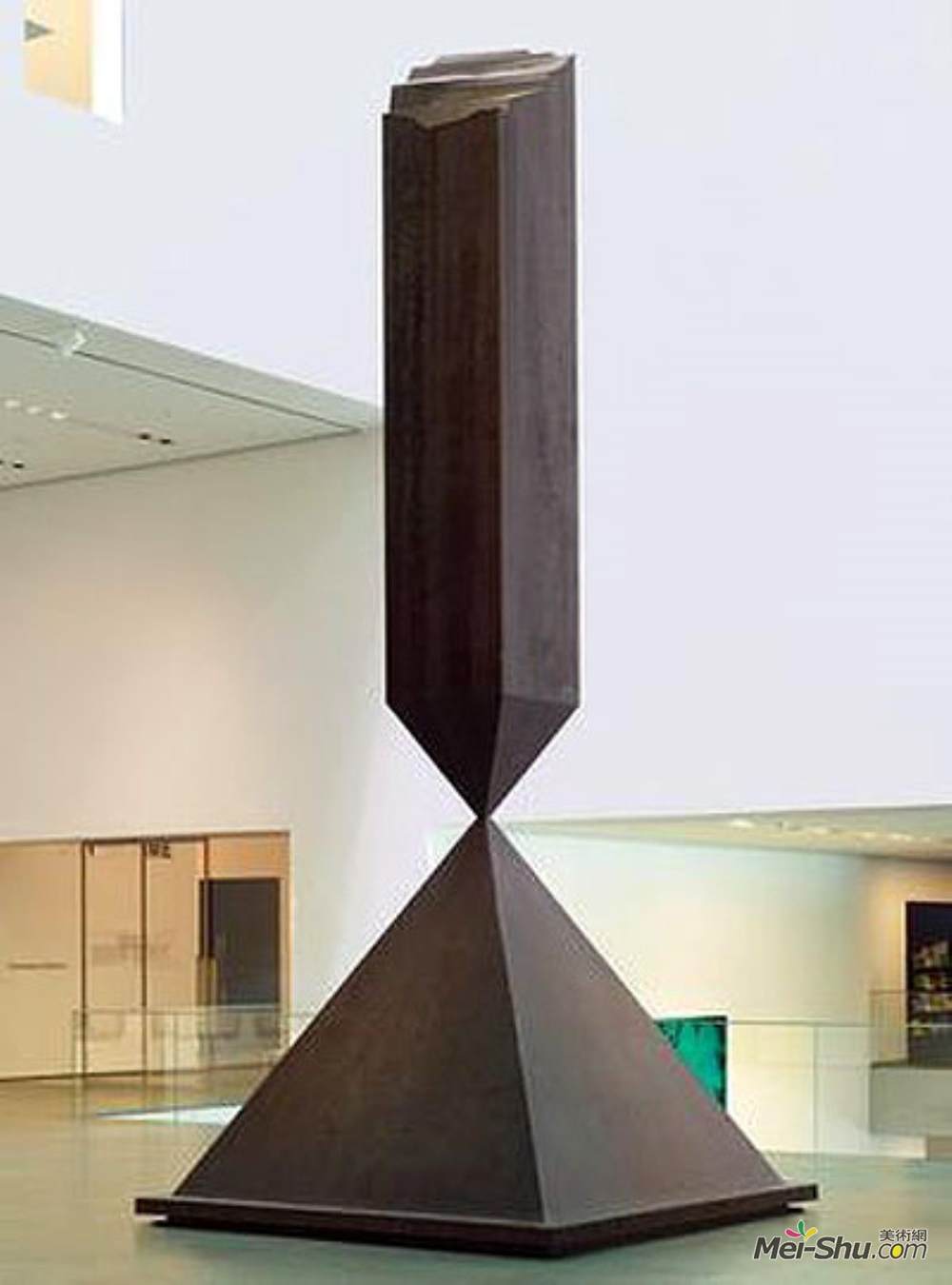 巴尼特·纽曼(Barnett Newman)高清作品《断碑》
巴尼特·纽曼(Barnett Newman)高清作品《断碑》
作品名:断碑
艺术家:巴尼特·纽曼
年代:1963—1969;美国
风格:极简主义
类型:雕塑
标签:寓言与符号
尺寸:749.9 x 318.8 cm
收藏:现代艺术博物馆(现代艺术博物馆),纽约市,纽约,美国
Newman做了几件雕塑,但Broken Obelisk是他最伟大的雕塑。它使用沉重,粗糙表面的钢材,与倒置方尖碑的轻盈印象形成对比,后者几乎漂浮在稳定的金字塔之上。这两个部分连接在一个只有两英寸和四分之一英寸的空间,一个内部的钢棒稳定了巨大的雕塑。尽管古代金字塔和方尖碑的形象常常与死亡联系在一起,纽曼在这里重新塑造它们以唤起生命和超越。有几个版本的碎石碑,其中之一在休斯敦,德克萨斯州致力于纪念马丁路德金博士,小方尖碑是一种形式的古埃及艺术,是一个纪念。你在这里看到的是方尖碑的顶部接吻,在某种意义上,金字塔的顶部,另一种埃及形式,它的底部锯齿状地切到中间,面向天空。这是一座雕塑,字面上讲,它立在头上。制作于1967年——美国动荡不安的时期——纽曼在这里取得的成就只是一种纪念形式,它不是对任何特定事物的纪念。有一种想法是雄心勃勃的愿望没有实现,一种哀悼的时刻,不再是一个英雄,而是一个暗杀,破碎的梦想,失望,希望。我认为它反映了纽曼的民主,基本上民粹主义的政治感情,非常想发明一个代表每个人的符号。
Title:Broken Obelisk
artist:Barnett Newman
Date:1963 - 1969; United States
Style:Minimalism
Genre:sculpture
Tag:allegories-and-symbols
Dimensions:749.9 x 318.8 cm
Location:Museum of Modern Art (MoMA), New York City, NY, US
Newman made several sculptures, but Broken Obelisk is his most monumental. Its use of heavy, rough-surfaced steel contrasts with the impression of lightness created by the inverted obelisk that almost floats above the stable pyramid. The two parts connect at a space of only two and a quarter inches, with an internal steel rod stabilizing the massive sculpture. Although ancient imagery of pyramids and obelisks are often associated with death, Newman reinvents them here to evoke life and transcendence. Several versions of Broken Obelisk exist, with one in Houston, Texas dedicated to the memory of Dr. Martin Luther King, Jr. The obelisk is a form from ancient Egyptian art that was a memorial. And what you have here is the top of the obelisk kissing, in a sense, the top of the pyramid—another Egyptian form—its bottom jaggedly cut midway, facing upward to the sky. This is a sculpture, which stands on its head, literally.Made in 1967—a time of great unrest in the United States—what Newman is achieving here is a memorial form, which is not a memorial to anything in particular. There is this idea of soaring aspiration unfulfilled, a lament for a time that isnt any more one of heroes, but one of assassinations, of broken dreams, disappointments, hopes. I think it reflects Newman's democratic, fundamentally populist political feelings, very much wanting to invent a symbol that represents everybody.
作品名称:《断碑》巴尼特·纽曼(Barnett Newman)高清作品欣赏
作品链接:https://www.mei-shu.com/famous/25869/artistic-161668.html
作品类别:油画
免责声明:本站部分公开资料来源于互联网,目的是用于学术交流与讨论,并不代表本网赞同其观点和对其真实性负责。如果您认为我们的侵犯了您的权益,请与我们联系(banquan#mei-shu.com #替换为@),我们将在第一时间删除相关内容。